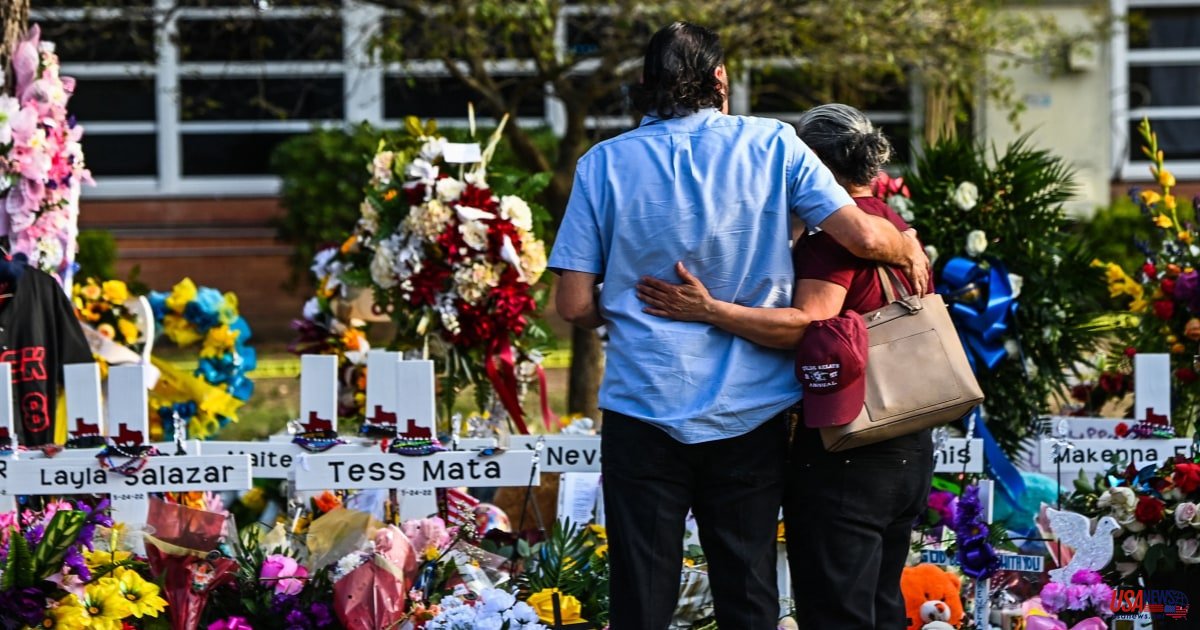UVALDE (Texas) -- Uvalde, Texas, a small Texas town, is still trying to heal from the shooting death of 19 children and 2 teachers at its elementary school. Thoughts have turned to making sure that the Uvalde legacy, which was the center of the fight for equal education for Mexican Americans more than 50 years ago, lives on.
After the school board had decided to not renew George Garza's contract, a well-known Mexican American teacher at Robb Elementary, the students staged a six week student walkout. The school board refused to grant student demands for a bilingual curriculum or the hiring of more Mexican-American teachers. The result of a class-action lawsuit alleging discrimination against Hispanic students led to the district being placed under desegregation orders. This case took many years to resolve.
Some Uvalde Hispanic leaders are concerned that students could lose their education and be unable to move up in the future if they return to school.
Ronnie Garza is George Garza's younger son and county commissioner. He represents Uvalde, which includes Robb Elementary. "I feel for them. What will they feel the first day of school? It's hard to forget about the teachers. I wonder if they will want to return to school.
According to an official timeline, it took more than an hour between the time the first officers arrived and the time he was shot dead. Parents outside begged for police to hurry in, while panicked children dialled 911 from within.
Steven McCraw, the head of Texas Department of Public Safety has stated that Pete Arredondo the school district chief of police, was responsible for the multiagency response and made the wrong decision not to order officers to enter the classroom faster to confront the gunman.
Arredondo did not respond to multiple requests for interviews and questions from The Associated Press. However, he has defended his response.
On Thursday, Uvalde school officials stated that they would not answer questions regarding the investigation or personnel issues, even though parents expressed concern about safety. When Hal Harrell was asked whether he still trusted Arredondo, Hal replied, "That's personnel."
Harrell stated that the district will be adding more officers to its police force in the fall and that there are ongoing discussions regarding what happens to the school's site.
Harrell stated, "We won't be returning to that campus in any way or fashion."
Lalo Diaz, Uvalde County Justice of the Peace, helped to identify the bodies of the victims at the school he attended. He said that it was right to tear it down.
Diaz stated, "It's going be difficult for anyone to go in there."
Communities have been struggling to decide what to do about the buildings after mass shootings at schools all across the country. Newtown, Connecticut voters approved the demolition of Sandy Hook Elementary School, where 26 students and their teachers were killed, and the construction of a new school. Columbine High School in Colorado, where 13 people were killed during a 1999 attack on the school, is still standing.
Some of the pecan trees that George Garza planted at Robb Elementary still provide shade. Garza also had raised funds for a basketball court at the school and a running track.
Alfredo Rodriguez Santos, a high school student from Uvalde aged 17, decided to walk out on the 1970 walkout. Santos stated that the inequalities of the city had been a part of his subconscious.
Santos said that he sensed something was wrong, but he wasn't able explain them. He had also wondered why certain parts of town were more populated than others and why Mexican American students were not encouraged to attend college.
We knew something was wrong when a lot of children dropped out of school. Santos, who lives in Austin and is the publisher of bilingual newspapers, said that not many kids were going to college.
Monica Munoz Martinez is an associate professor of history at University of Texas at Austin. She grew up in Uvalde, and went to Robb Elementary in 1990. Her parents were both involved in the walkout when she was in high school.
Martinez's mother had to translate for her Spanish-speaking mother so she could understand English-only school meetings and assemblies.
Martinez stated, "That's Robb's memory of sitting outside the door trying through the crack to give an outline to her mother when they walked out of that meeting."
Martinez stated that Uvalde is "distinguished" from other walkouts around the same time because the school board did not meet the demands of students and parents.
She said, "Leaders at Uvalde at the moment... were sending a strong signal that they were committed to maintaining the racial order there"
Genoveva Morales, a Hispanic student, filed a class action lawsuit against the school district in 1970. A court eventually found that segregation was still present and ordered the district to desegregate. In 2008, a consent order was signed and the lawsuit was resolved in 2017.
Martinez's mother worked in the school district for over 35 years as an administrator and was also a member on the school board at the time that the junior high was named after Morales.
Parents of Robb Elementary victims and students who were injured in the shooting have been speaking out. They also testified to Congress this week as they try to reach a bipartisan agreement regarding gun safety measures.
Martinez stated, "I hope that Uvalde's voices will be heard and that it can help to save more lives not only in Texas, but all across the country."













